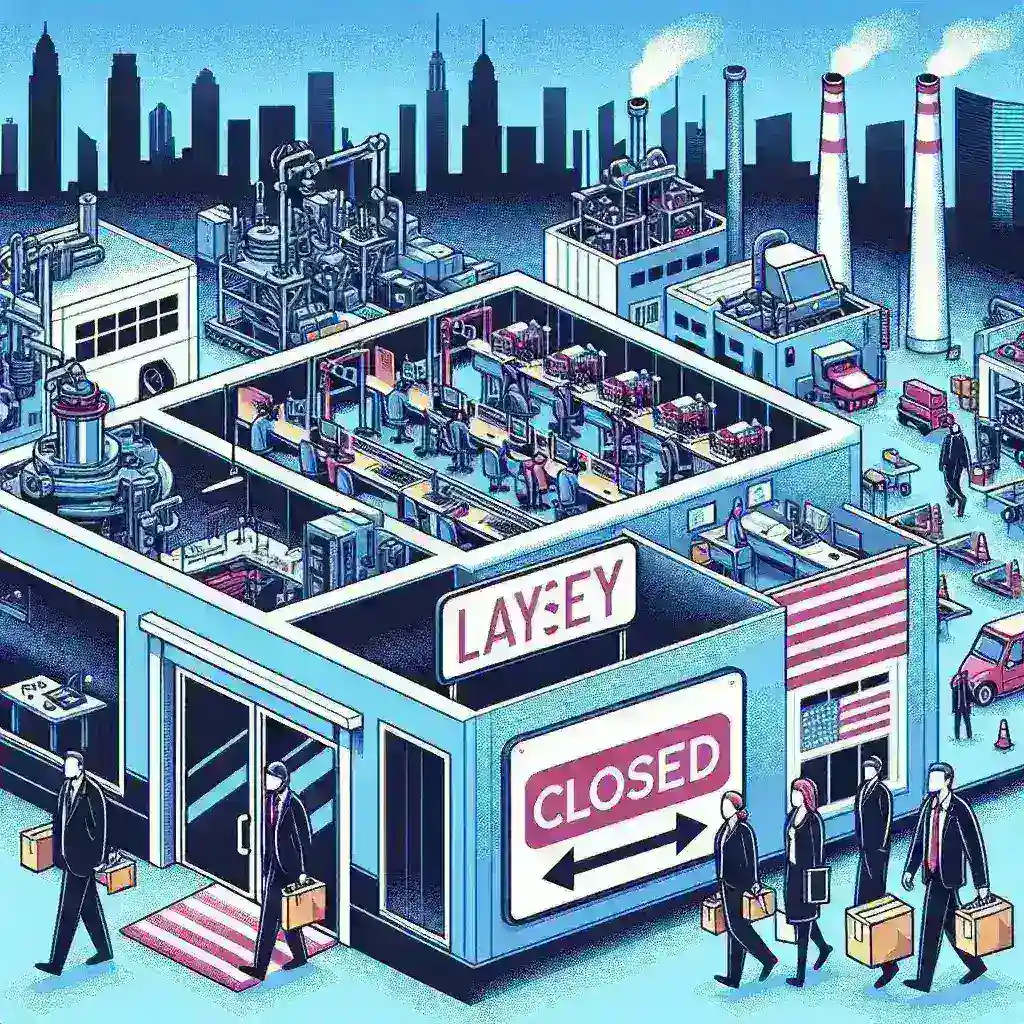Introduction
The recent restructuring and layoffs at Intel have sent shockwaves throughout the U.S. tech manufacturing sector. With the company being a cornerstone in the semiconductor industry, its workforce decisions will undoubtedly ripple across various tech hubs.
The Landscape of U.S. Tech Manufacturing
Before delving into Intel’s recent changes, it’s important to understand the context of tech manufacturing in the U.S. Historically, the U.S. has been a leader in semiconductor manufacturing, hosting major companies and a skilled workforce. Cities like San Jose, Austin, and Phoenix have become synonymous with innovation and technological advancement.
Historical Context
In the 1980s, the U.S. semiconductor industry dominated global markets, accounting for over 50% of worldwide sales. However, as globalization progressed, many manufacturers shifted production overseas to reduce costs. Despite this trend, companies like Intel remained significant players, making substantial investments in U.S. facilities.
Intel’s Restructuring Announcement
In late 2023, Intel announced a significant restructuring plan aimed at streamlining operations and reducing costs. This decision was prompted by various factors, including increased competition from international rivals and the need to enhance operational efficiency.
The Impact on U.S. Tech Manufacturing Hubs
The implications of Intel’s workforce changes are profound, affecting both local economies and the broader tech ecosystem.
Job Losses and Economic Consequences
Intel’s layoffs will lead to thousands of job losses, hitting hard in regions heavily reliant on tech manufacturing. For cities like San Jose and Austin, where tech jobs form the backbone of the economy, this could result in significant downturns in local spending and job creation.
Statistics on Job Losses
- Intel’s layoffs are expected to impact over 10,000 employees.
- Tech jobs in the affected areas account for approximately 15% of total employment.
- Experts predict a possible 2% decline in local GDP for severely affected regions.
Loss of Innovation and Talent
With layoffs come the risk of losing not just jobs, but also valuable talent and innovation potential. Many skilled engineers and technicians may seek opportunities elsewhere, leading to a brain drain in regions that have built ecosystems around these professionals.
The Brain Drain Effect
Intel has long been a training ground for engineering talent. The departure of thousands of employees could shift the competitive landscape, allowing other companies to attract these skilled workers. This brain drain could stifle innovation in the very regions where it was once thriving.
Real Examples of Impact
Companies in the vicinity that often collaborate with Intel might also feel the effects. For instance, companies that rely on Intel’s microprocessors for their products may face disruptions in their supply chain, which could lead to delayed product releases and financial losses.
Future Predictions
As Intel restructures and navigates these turbulent waters, the future of U.S. tech manufacturing hangs in the balance. Analysts predict several outcomes depending on Intel’s next moves.
Potential Recovery Strategies
Intel’s leadership could focus on several strategies to mitigate the negative impacts:
- Investment in Emerging Technologies: Intel may pivot towards cutting-edge technologies like AI and quantum computing, which could generate new job opportunities.
- Strategic Partnerships: Collaborating with other tech firms could enable Intel to share resources and innovation, fostering growth.
Pandemic Recovery Considerations
The ongoing effects of the COVID-19 pandemic have altered the operational landscape for many companies, including Intel. The focus on remote work and digital transformation has created new demands for tech products. Intel’s adaptation to these trends will be crucial for its recovery.
Pros and Cons of Intel’s Restructuring
As with any significant corporate restructuring, there are both pros and cons associated with Intel’s recent decisions.
Pros
- Increased Efficiency: Streamlining operations can lead to cost savings and improved profitability.
- Focus on Core Competencies: By reducing workforce numbers, Intel can concentrate on its most vital projects and technologies.
Cons
- Job Losses: The immediate impact includes significant job losses that affect families and communities.
- Potential Decline in Innovation: Reducing the workforce can hinder collaborative efforts and the development of new technologies.
Cultural Relevance
The cultural significance of tech hubs cannot be understated. They are not just centers of economic activity; they are also places where innovation thrives. The layoffs at Intel could lead to a cultural shift in these communities, where technology entrepreneurship and collaboration have been key to their identity.
Conclusion
Intel’s workforce restructuring and layoffs are a stark reminder of the volatility in the tech manufacturing landscape. As communities brace for the impacts, the focus now shifts to how Intel, and the broader tech sector, will adapt to these changes. Ensuring the survival of job opportunities and the nurturing of innovation will be critical in shaping the future of U.S. tech manufacturing hubs.
In summary, while Intel’s restructuring presents significant challenges, it also offers a chance for revitalization and strategic growth if approached thoughtfully.




